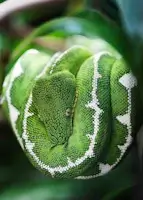Snake Keeping: A Comprehensive Guide for Beginners and Advanced Enthusiasts
Snakes are among the most fascinating reptiles to keep as pets. Their graceful movements, unique adaptability, and minimal interaction requirements make them ideal companions for reptile enthusiasts. However, snake keeping demands a high level of responsibility and knowledge. In this blog post, you’ll learn everything about proper snake care, including choosing the right species, setting up the terrarium, feeding, and general care.
1. Why Choose a Snake as a Pet?
Snakes are calm, do not require daily exercise, and can live a fulfilling life in a well-equipped terrarium. They are suitable for people seeking an exotic pet and who are willing to dedicate time to understand its needs.
Advantages:
- Relatively low maintenance
- Interesting behavior and appearance
- No noise or odor (except for waste)
Disadvantages:
- Specific care requirements
- Feeding with live or frozen animals (depending on species)
- Long-term commitment, as many species can live for several decades
2. The Right Snake for Beginners
Beginners should start with an easy-to-care-for, non-venomous snake. Suitable species include:
- Corn Snake (Pantherophis guttatus)
Size: 1.2–1.8 meters
Lifespan: 15–20 years
Behavior: Calm and easy to handle - Ball Python (Python regius)
Size: 1.2–1.5 meters
Lifespan: 20–30 years
Behavior: Calm, sometimes a bit shy - Boa Constrictor Imperator (Dwarf Boa)
Size: 1.5–2 meters
Lifespan: 20–30 years
Behavior: Gentle and relatively undemanding
3. The Terrarium: A Home for Your Snake
Size and Setup
- Terrarium Size: At least as long as the snake and twice as deep as its length.
- Substrate: Depending on the species, use soil, bark mulch, or sand.
- Hides: At least two – one on the warm side and one on the cool side.
- Climbing Opportunities: For arboreal species like tree boas or green pythons.
- Water Dish: Large enough for the snake to soak in.
Temperature and Humidity
- Temperature: 25–30°C during the day, at night depending on the species 20–25°C.
- Heating Source: Heat mats, heat lamps, or ceramic heaters.
- Humidity: Ranges from 40% (for desert species) to 80% (for tropical species).
Lighting
Snakes do not need special UVB lighting, except for certain species. A daylight lamp helps simulate the day-night cycle.
4. The Right Diet for Snakes
Prey Items
- Main Food: Mice, rats, birds, or other small animals, depending on the species.
- Live or Frozen Food: Frozen food is easier and safer, but live food may stimulate instinctive behavior in some snakes.
Feeding Frequency
- Juveniles: Every 5–7 days
- Adults: Every 10–14 days
Important Notes
- Feed the snake outside of the terrarium to avoid stress.
- Make sure the food is warmed to room temperature.
- Do not overfeed your snake, as this can lead to obesity.
5. Care and Health Maintenance
Regular Cleaning
- Remove feces and urine immediately.
- Clean the entire terrarium every few months.
- Change the water daily.
Health Symptoms to Watch For
- Healthy Snake: Clear eyes, smooth skin, active behavior.
- Warning Signs: Frequent rubbing against objects, unusual behavior, refusal to eat, or respiratory issues.
Shedding
A snake sheds regularly, and it should shed in one piece.
Shedding problems often indicate insufficient humidity.
6. Proper Handling of Snakes
Snakes are not cuddle animals, but they can become accustomed to human handling.
Handling Tips:
- Lift the snake from underneath, not from above, to avoid startling it.
- Carry the snake loosely without constraining it.
- Do not handle your snake directly after feeding.
7. Common Mistakes in Snake Keeping
- Inappropriate Terrarium: A too small or improperly set-up terrarium can cause stress.
- Incorrect Diet: Prey that doesn’t match the snake’s size can lead to health issues.
- Temperature and Humidity Errors: Incorrect climate often leads to respiratory illnesses or shedding problems.
- Careless Handling: Improper handling can lead to injuries for both humans and the snake.
8. Legal Requirements
In some countries and regions, there are strict regulations for keeping snakes. Be sure to check:
- Species Protection Laws (CITES)
- Registration Requirements
- Terrarium Standards
9. Conclusion: A Life with Snakes
Keeping snakes is a fascinating experience that requires extensive knowledge and responsibility. With the right preparation and care, you can provide your snake with a healthy and species-appropriate life. Be sure to educate yourself thoroughly about the needs of your pet!

